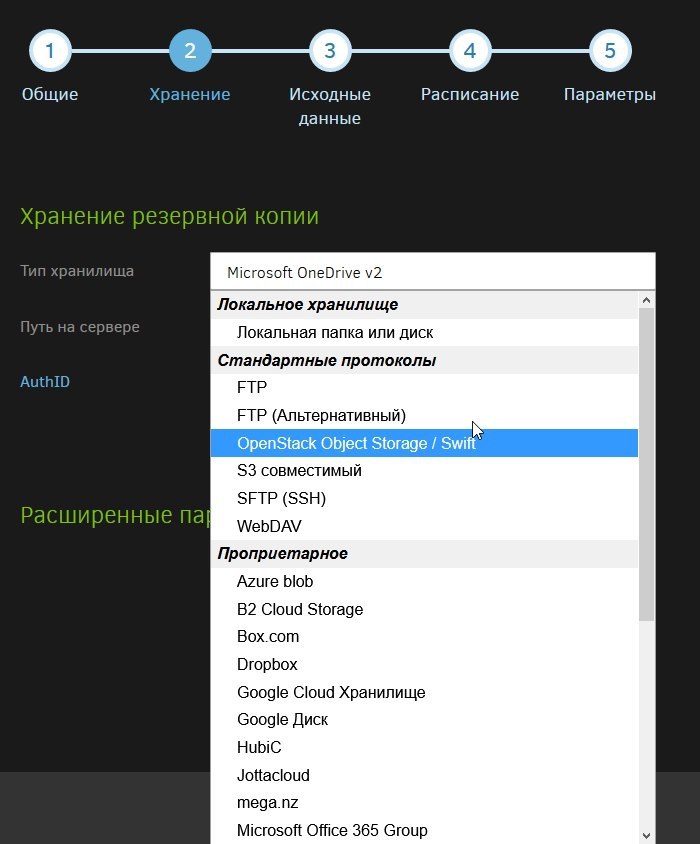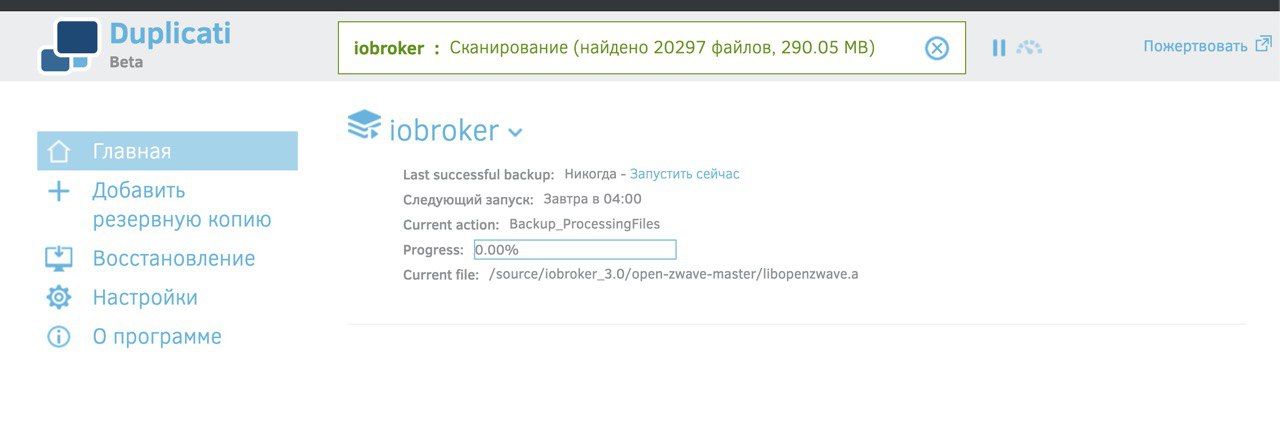Вот описан механизм бэкапа, интересный
The backup process explained¶
Traditional backup software makes a full backup at regular intervals (for example once a week). All other backups are incremental. These incremental backups send all new and changed files to the backup target. The drawback is that if a folder needs to be restored from the most recent backup, the latest full backup has to be restored first, followed by all incremental backups that were made after the latest full backup. This is a cumbersome and error-sensitive procedure.
Making a full backup every day results in reliable backups, but is very time consuming and resource-unfriendly. All source data has to be sent to and stored at the backup target every time the backup task is executed.
Duplicati combines the best of both worlds. When a backup is made, only changed parts of files are sent to the destination. From this point of view, Duplicati behaves like it is making an incremental backup. When one or more files (or all files and folders) need to be restored from the most recent backup, this backup (and all other ones) look like a full backup: all data can be restored with a single operation, without replaying a set of incremental backups.
Duplicati 2.0 introduced a new, revolutionary storage format for backups. The storage format is block-based. This means, it does not store the files, but chops all files into tiny blocks. Here is a simple explanation.
Imagine your local files consist of many small bricks in different shapes and colors. Duplicati takes your files, breaks them down into single bricks and stores these bricks in small bags. Whenever a bag is full, it is stored in a huge box (which is your online storage). When something changes, Duplicati puts new bricks into a new bag and puts it into the box. When a local file needs to be restored, Duplicati knows what bricks it needs and in which bags these are. So, it grabs the required bags, takes out the bricks and rebuilds your file. If the file is still on your computer (in a version you do not want anymore), Duplicati can just replace the wrong bricks, thus updating the existing file.
From time to time, Duplicati will notice that there are a few bags that contain bricks it does not need anymore. It grabs those bags, sorts the bricks. It throws away the bricks that are not needed anymore, then it puts the required bricks into new bags and puts them back into the box. Duplicati will also notice if there is a large number of bags that only contain a very small number of bricks. Duplicati grabs all those bags, takes out the bricks, puts them into a small number of new bags and puts these into the box.
And to say the good news again: There is no need to upload full backups regularly. This makes Duplicati a perfect choice for incremental backups of large media libraries.



